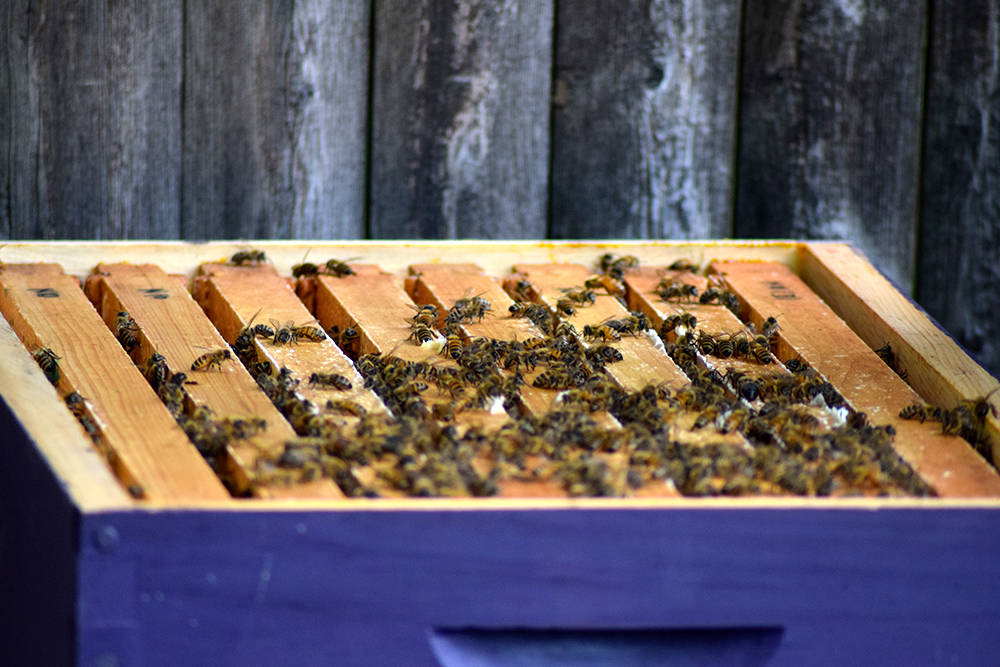Urban beekeeping for beginners
The relatively small scale of bee colonies makes urban beekeeping an ideal back-to-nature project for city dwellers. Here’s how to start your first beehive.

Since the media swarm around colony collapse disorder started in 2006, urban beekeeping has grown increasingly popular.
Over the past decade, major metropolitan areas like New York, Detroit, and Los Angeles have passed laws permitting beekeeping, and the membership to metropolitan beekeepers associations has swelled to follow suit. Even big name luxury hotels like the Waldorf Astoria and Fairmont San Francisco have jumped on the trend, establishing hives with hundreds of thousands of bees to provide pollinators for their restaurants’ hotel gardens and do their part for the planet (and their PR).
The relatively small scale of bee colonies makes beekeeping an ideal back-to-nature project for city dwellers. “In terms of space, you only really need a square yard [measurement] to have a beehive,” said Samantha Schloeman, regional staff advisor for the Best Bees Company. “It’s pretty great for living in an urban environment.”
Just as compact beehives are perfectly sized for city life, cities equally suit bees. “Bees tend to do better in urban environments,” Schloeman said. “We’re still trying to figure out why this may be happening.”
The diversity of foliage in urban areas compared to the monoculture of crops common in many rural areas could be the cause; cities may also harbor fewer diseases that threaten bees.
How to get started with beekeeping
Starting an urban apiary is relatively simple. No matter where you are, the first step is to make sure your beekeeping project is legal. The laws for beekeeping vary by municipality. In some cities, becoming a beekeeper is as simple as putting a hive in your backyard, but others require a registration fee and license that needs to be regularly renewed. Check your local zoning ordinances, which are usually available online (if not, call your municipal city clerk and ask where to find them).
Local beekeepers associations can also guide you through the exact rules and requirements.
Be a good neighbor when beekeeping
Good beekeepers should also be good neighbors. Those unfamiliar with beekeeping may fear stings, allergies, and swarms. Some cities like Minneapolis require written consent from a majority of your neighbors before you can begin beekeeping.
“The best way is to be open and honest,” said Schloeman. “Get information out there and make sure people are aware.”
Let your neighbors know that bees are relatively docile — wasps and hornets are much more likely to sting — and because they forage within a five mile radius, the fears of disruptively concentrated bee populations are usually overblown. Swarming can be an issue in late May or early June, but swarming bees are not aggressive. Even so, some beekeepers associations will wrangle swarms with a “bee vacuum,” a specially-designed catch box and suction apparatus, if need be.
Where to place an urban beehive

When the legal logistics are sorted out and the neighborhood is on board, then it’s time to pick a spot for your hive. Lucky city dwellers with a backyard can tuck their hives away, ideally by a fence to prevent cold air from coming in through the entrance and compromising the hive’s temperature regulation. For smaller yards, the roof is also a good option, especially if there is a wall to use as windbreak.
Hives should be located in partial or full sun near a water source (a hummingbird feeder stocked with water or a saucer filled with dew-catching marbles will do), otherwise bees will be drawn to the sweet scent of chlorinated pools.
What you need for urban beekeeping
Once the stage is set, beekeeping suits, gloves, hives, and even the bees themselves can be purchased online. Hives come in a variety of styles (the Langstroth style hive is recommended for beginner beekeepers) and are delivered in pieces that can be easily assembled with nails or glue. Beekeepers associations will usually have a preferred source for the bees, and it is worth asking. Bees sourced from the local area are usually more likely to thrive because they are adapted to the local environment, but experienced beekeepers will know what works best for your city.
The process can seem intimidating to wannabe beekeepers, but perhaps the most important step is getting started at all. “We need more urban beekeepers,” says Schloeman. “It’s really important for anyone who’s interested to pursue it and not be afraid of it.”
